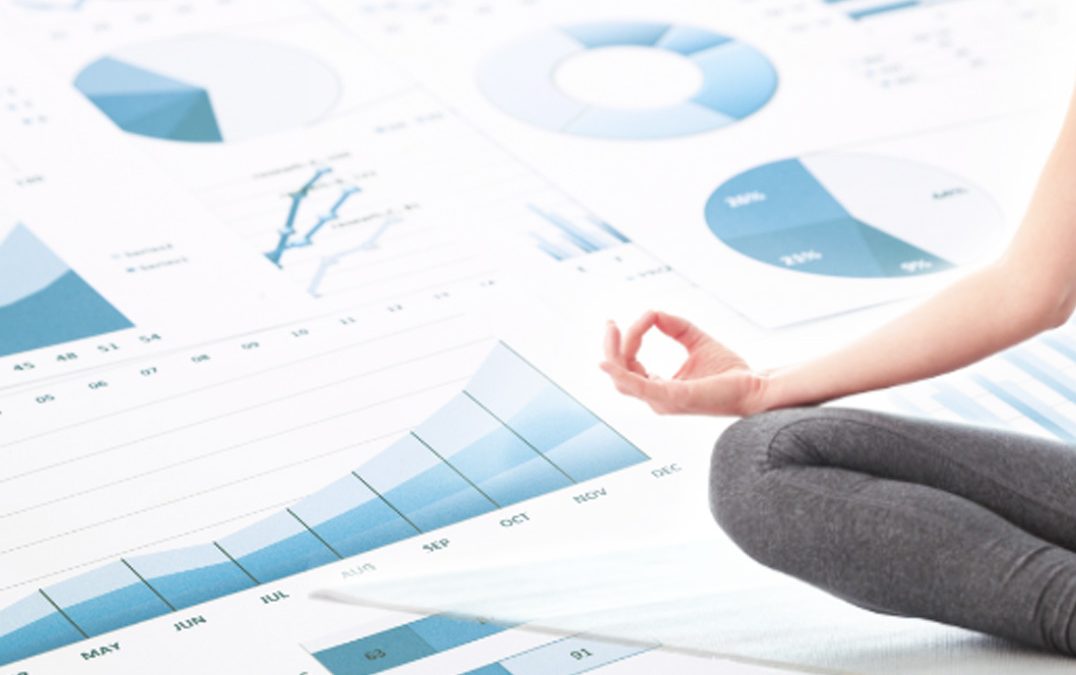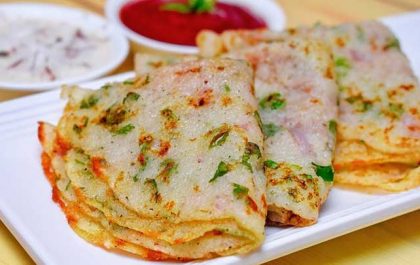Yoga Vidya Niketan (YVN), Member Institute of Indian Yoga Association successfully conducted its annual one-month Yoga Summer Course from May 1 to May 31, 2024. The course ran for one and a half hours daily across 41 physical centers around Mumbai and Navi Mumbai, extending…
From the Annals of Yoga Research
Research is extremely important to support different approaches to health care. In the recent past, Yoga has been gaining lot of attention as Yoga Institutes, reseachers, scholars have started offering substantive clinical research evidence. In this issue, Indian Yoga Association brings to you the Research Papers published by our Member Institutes and other Institutes or individuals on Benefits of Yogic Breathing
International Centre for Yoga Education and Research
Immediate effect of Chandra Nadi pranayama (left unilateral forced nostril breathing) on cardiovascular parameters in hypertensive patients
Author: Ananda Balayogi Bhavanani, Madanmohan and Zeena Sanjay
Published In: International Journal of Yoga
Published On: 2012 Jul-Dec; 5(2): 108–111
Abstract
Introduction: Recent studies have reported differential physiological and psychological effects produced by exclusive right and left nostril breathing and clinical research is required to prove immediate and sustained efficacy of these techniques in various psychosomatic conditions such as hypertension (HT). The present study was designed to determine immediate effects of 27 rounds of exclusive left nostril breathing, a yogic pranayama technique known as chandra nadi pranayama (CNP) on cardiovascular parameters in patients of essential HT.
Materials and Methods: Twenty two patients of essential HT under regular standard medical management were individually taught to perform CNP by a qualified yoga instructor with a regularity of 6 breaths/min throughout a performance of 27 rounds of CNP. Pre and post intervention heart rate (HR) and blood pressure (BP) measurements were recorded using non-invasive semi-automatic BP monitor and Students t test for paired data used to determine significant differences.
Results: Twenty seven rounds of CNP produced an immediate decrease in all the measured cardiovascular parameters with the decrease in HR, systolic pressure (SP), pulse pressure, rate-pressure product and double product being statistically significant. Further, gender-based sub-analysis of our data revealed that our male participants evidenced significant reductions in HR and SP with an insignificant decrease in diastolic pressure, while in female participants only HR decreased significantly with an insignificant decrease in SP.
Discussion and Conclusion: It is concluded that CNP is effective in reducing HR and SP in hypertensive patients on regular standard medical management. To the best of our knowledge, there are no previously published reports on immediate effects of left UFNB in patients of HT and ours is the first to report on this beneficial clinical effect. This may be due to a normalization of autonomic cardiovascular rhythms with increased vagal modulation and/or decreased sympathetic activity along with improvement in baroreflex sensitivity. Further studies are required to enable a deeper understanding of the mechanisms involved as well as determine how long such a BP lowering effect persists. We recommend that this simple and cost effective technique be added to the regular management protocol of HT and utilized when immediate reduction of BP is required in day-to-day as well as clinical situations.
Morarji Desai National Institute of Yoga
Efficacy of Pranayama in Preventing COVID-19 in Exposed Healthcare Professionals: A Randomized Controlled Trial
Author: Rakesh Sarwal, Dr,Rajinder K. Dhamija, Khushbu Jain, Ishwar V. Basavaraddi
Published In: OSE Preprints
Published On: April 2021
ABSTRACT
Background: The global outbreak of COVID-19 has created a challenging situation, especially among the frontline Health Care Professionals (HCPs), who are routinely exposed and thus at a relatively higher risk of infection. A few studies have shown the practice of Pranayama, a component of Yoga, to be effective in improving immune function and reducing infection. However, no clinical trial on the efficacy of Pranayama in preventing COVID-19 has been conducted.
Aim & Objective: This randomized clinical trial assessed the effect of Pranayama in preventing COVID-19 infection in Health Care Professionals (HCPs) routinely exposed to COVID-19 cases.
Methodology: The study was conducted at 5 different COVID-19 hospitals in New Delhi, India during September-November, 2020. 280 HCPs assigned duties with COVID-19 patients who were found negative in COVID-19 antibody test in pre-intervention assessment were recruited and randomly assigned to intervention and control groups. The intervention group practiced especially designed Pranayama modules twice a day (morning and evening) for 28 days under the supervision of Yoga instructors through online mode, while those in the control group were advised general fitness practices (like walking, jogging, running). Participants who became symptomatic underwent RTPCR / Point of Care Rapid Antigen test for confirmation of COVID 19 diagnosis. All the patients also underwent antibody testing for COVID-19 on 28th day of the intervention to detect asymptomatic infection.
Results: 250 participants, comprising 123 in the intervention group and 127 in the control group, completed the study. The intervention and control groups had comparable demographics and baseline characteristics. Three participants (all controls) developed COVID 19 symptoms during the study. On the completion of the study, only one participant in the Intervention group tested positive, while 9 participants in the control group (Including three symptomatic participants) tested positive for COVID-19 antibodies. This difference was statistically significant (P-value: 0.01). Conclusion: Practice of our especially designed Pranayama module, every day for 28 days was highly effective in preventing COVID-19 infection in exposed healthcare professionals (HCPs).
Patanjali Yoga Training and Research Centre
Immediate Effect of a Yoga Breathing Practice on Attention and Anxiety in Pre-Teen Children
Author: Shirley Telles, Ram Kumar Gupta, Kumar Gandharva, Babita Vishwakarma, Niranjan Kala, and Acharya Balkrishna
Published In: MDPI
Published On: 2019 July 22
Abstract
Pre-teen children face stressors related to their transition from childhood to adolescence, with a simultaneous increase in academic pressure. The present study compared the immediate effects of 18 min of (i) high frequency yoga breathing with (ii) yoga-based breath awareness and (iii) sitting quietly, on (a) attention and (b) anxiety, in 61 pre-teen children (aged between 11 and 12 years; 25 girls). Attention was assessed using a six letter cancellation task and Spielberger’s State Trait Anxiety Inventory STAI-S was used to measure anxiety before and after the three practices, practiced on separate days. Repeated measures ANOVA, followed by Bonferroni adjusted post-hoc analyses showed an increase in total attempts and net scores after high frequency yoga breathing (p < 0.05), while wrong attempts increased after yoga based breath awareness (p < 0.05). Anxiety decreased comparably after all three interventions. The 25 girls in the group had the same trend of results as the whole group with respect to the attention-based cancellation task, while boys showed no, how since change. For both girls and boys, anxiety decreased after all three 18min interventions. The results suggest that high frequency yoga breathing could be a short, useful school based practice to improve attention and reduce anxiety.
Swami Vivekananda Yoga Anusandhana Samsthana (SVYASA)
Yoga for Bronchial Asthma: A controlled study
Author: R Nagarathna, HR Nagendra
Published On: October 19, 1985
Published In: British Medical Journal
Abstract:
Fifty three patients with asthma underwent training for two weeks in an integrated set of yoga exercises, including breathing exercises, suryanamaskar, yogasana (physical postures), pranayama (breath slowing techniques), dhyana (meditation), and a devotional session, and were told to practise these exercises for 65 minutes daily. They were then compared with a control group of 53 patients with asthma matched for age, sex, and type and severity of asthma, who continued to take their usual drugs. There was a significantly greater improvement in the group who practised yoga in the weekly number of attacks of asthma, scores for drug treatment, and peak flow rate. This study shows the efficacy of yoga in the long term management of bronchial asthma, but the physiological basis for this beneficial effect needs to be examined in more detail.
















